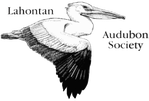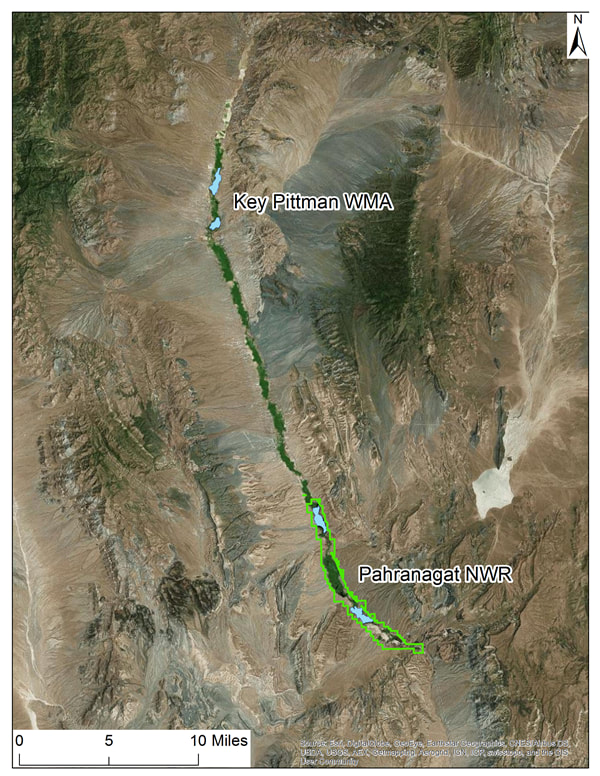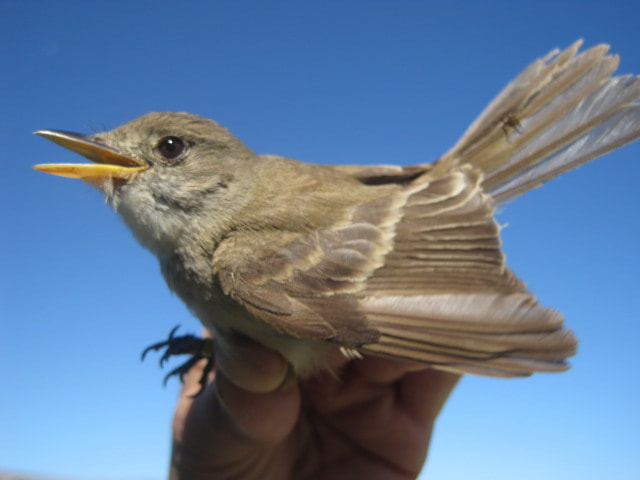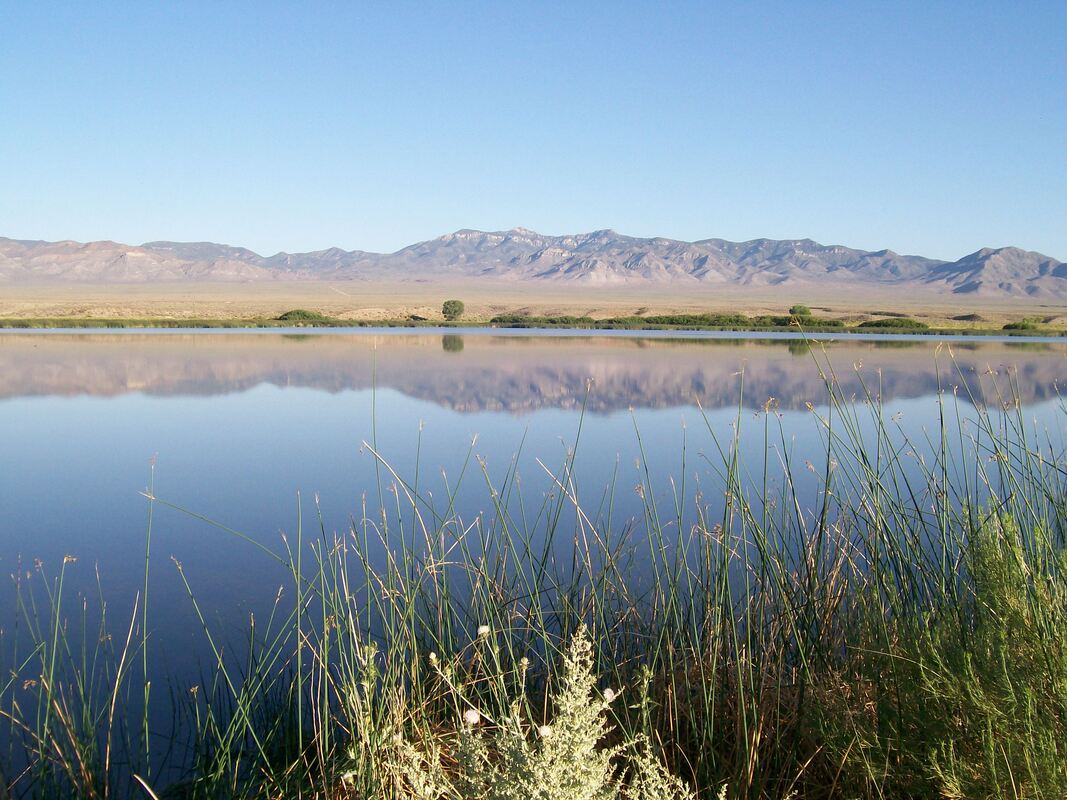|
By Diane Wong-Kone The Important Bird Area (IBA) Program is a worldwide effort to identify the most important places for bird populations and to focus conservation efforts. Within Nevada, there are 40 recognized IBAs, which are sites that provide essential breeding, migration, or wintering habitats for one or more bird species. These sites contain threatened or endangered species, endemic (i.e. native and only found at a specific location) species representative of a habitat type, and/or high concentrations of species. This Pelican issue’s highlighted IBA is the Pahranagat Valley Complex, which includes the Key-Pittman Wildlife Management Area (WMA), managed by the Nevada Department of Wildlife (NDOW) to the north, and the Pahranagat Valley National Wildlife Refuge (NWR), managed by the U.S. Fish and Wildlife Service (USFWS), on the south end of the valley. Pahranagat Valley is located in southeastern NV, in Lincoln County. A long time ago, the White River flowed through eastern Nevada, from the White River Valley to the north, connecting through Pahranagat Valley and down to the Virgin and Colorado River systems to the south. This was during the Pleistocene period, when Nevada had more water. Today isolated green ribbons mark the old riparian paths and attract migrating birds. These areas are extremely important, especially as global warming and increased pressure on existing water resources continue. Water in Pahranagat Valley is sourced from isolated springs, Hiko, Ash, and Crystal Springs, located in the northern part of the valley, and also from a connected alluvial and carbonate underground aquifer. In Pahranagat Valley, there are two areas with lakes managed for wildlife, and especially migratory birds. These include Key Pittman WMA to the north, and Pahranagat NWR to the south. In between lie private farmlands, which may also provide important migratory bird stopover habitat, but these lands are managed for productive agriculture rather than for wildlife habitat. Water conservation for the lake areas is very important because of shared water use and for Pahranagat NWR especially, because of its location at the terminus of the drainage. Because water upstream is used for agriculture, water in Pahranagat NWR is restricted by the growing season, with water incoming to the lakes in winter months, but only limited water typically from April through the beginning of October, because this water is used for irrigation. The Pahranagat Valley Complex lakes provide important habitat for many migratory birds on the Pacific Flyway, but managers face the challenge of creating and sustaining rare, wetland type habitats with a limited water source. Some common birds using wetland habitats in the Pahranagat Valley include: American Avocet, American Coot, American Widgeon, Black-crowned Night-Heron, Cinnamon Teal, Eared Grebe, Gadwall, Great Blue Heron, Least Sandpiper, Northern Pintail, Northern Shoveler, Pied-billed Grebe, Redhead, Ruddy Duck, Greater Sandhill Crane, and White-faced Ibis. Pahranagat Valley occurs in a transition zone. The habitat may be mostly described as typical Great Basin, with salt desert shrubs and cottonwood/willow riparian areas, but uplands have a Mojave influence with scattered Joshua trees and cacti. This mix of habitats attracts a great diversity of birds and other wildlife. Isolated willow patches on Key Pittman WMA and Pahranagat NWR can harbor breeding pairs of the endangered Southwestern Willow Flycatcher. Continued monitoring in transitional zones like Pahranagat Valley will be important to note the movement of southern species north, a potential response to global warming trends. The Great Basin Bird Observatory (GBBO) has been monitoring birds, and their surveys identified typical southern species such as Brown-crested Flycatcher, Bell’s Vireo, Lucy’s Warbler and Phainopepla in the Pahranagat Valley. Over 50 species of conservation priority birds in the Nevada Comprehensive Bird Conservation Plan have been documented in the Pahranagat Valley (1). Fall surveys in 2009-2011 by GBBO and Otis Bay Ecological Consultants documented the use of riparian and lake habitats and the passage of rare migrants such as the American Redstart, Black-and-White Warbler, and Black Tern. Other uncommon or rare birds that have nested in Pahranagat Valley include the White-tailed Kite, Red-shouldered Hawk, Summer Tanager, and Zone-tailed Hawk. Over 240 bird species have been documented on the Pahranagat NWR, which is about half of all bird species documented for the entire state. The greatest challenge to habitat managers in this IBA is water conservation. On the Pahranagat NWR, water management includes adapting water budgets to seasonal schedules based on limited water supply and improving efficiency of water delivery to Lower Lake. Vegetation management for Key Pittman and Pahranagat managers may include implementation of disturbances, such as mowing or controlled burning, to promote vegetational succession, or the planting of grain crops for migrating Sandhill Cranes. On Pahranagat NWR, active restoration created important riparian habitat by converting an abandoned, weedy agricultural field into a meandering stream that followed the historical path of the ancient White River. Plantings to regenerate critical riparian habitat also benefit nesting and migrating birds throughout the valley. Managing for the end-of-succession type vegetation, such as a mature riparian forest, or overgrown emergent vegetation or wetland marshes should not be the goal if habitats important for migratory and nesting birds are to be perpetuated over time. Considerations to perpetuate younger forests and successional vegetation, and especially mosaic landscapes with access to open water are critical for bird conservation.
Sources: 1. https://www.gbbo.org/bird-conservation-plan (accessed 4/8/2022). |
topics
All
Archives
July 2024
|





 RSS Feed
RSS Feed